The Rhode Island Red (RIR) is a breed of domestic chicken that originated in the United States in Massachusetts and Rhode Island in the late 19th century.
The Rhode Island Red is a farm-friendly breed. It is also an excellent choice for the beginner breeder who wants to keep a flock of chickens for eggs and meat.
This article will provide all the essential information on this hardy, friendly, and prolific breed. Keep reading to find out its history, characteristics, and care requirements.
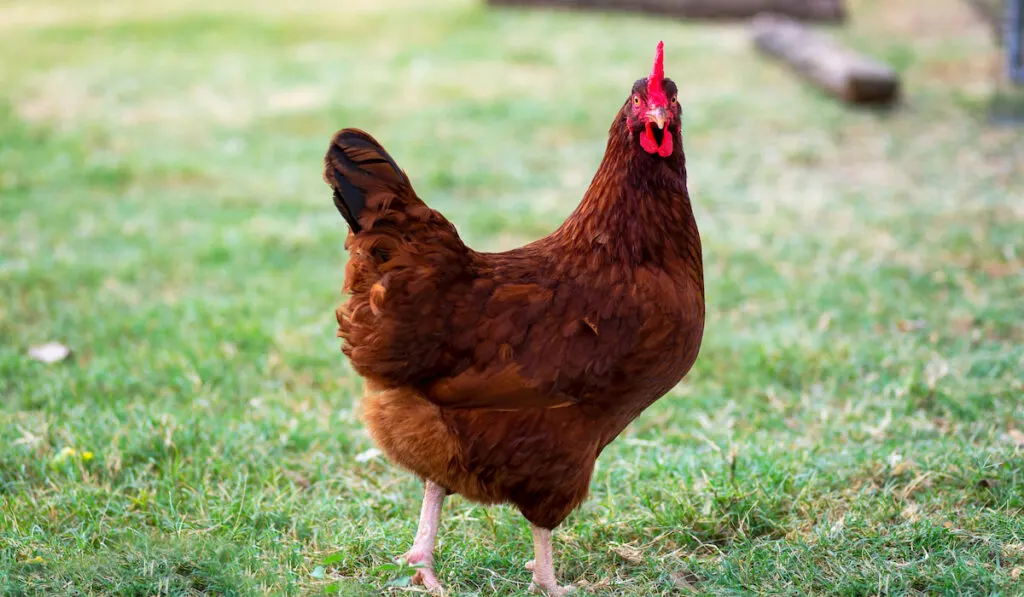
Table of Contents
Island Red Chicken Key Information
| Male Weight: | 8.6 lbs. |
| Female Weight: | 6.6 lbs. |
| Use: | Dual-purpose breed raised both for meat and eggs |
| Egg Size: | Large |
| Egg Production: | 200-300 per year |
| Lifespan: | 5-8 years |
| Climate Tolerance: | Good heat tolerance and cold hardy as well |
| Color: | Darker red/brown to a light rust |
| Temperament: | Friendly and non-aggressive |
The History of the Rhode Island Red Chicken
The breed originated in the late nineteenth century by crossing numerous varieties, including Malay, Cochin, and Red Junglefowl.
Everything started in 1854 when a man named William Tripp conducted a series of chicken breeding experiments.
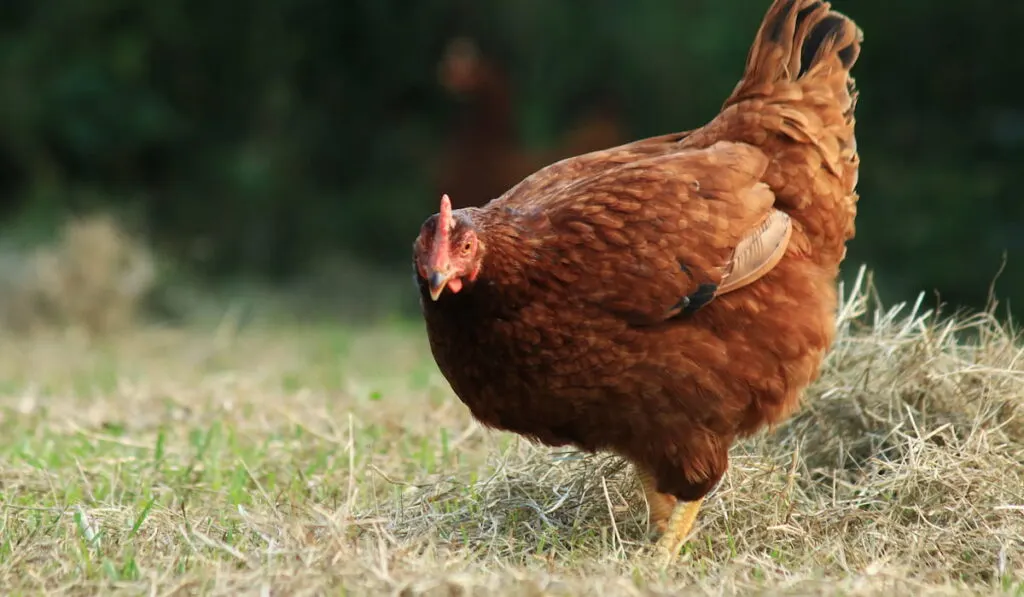
He was the captain of a ship that traveled from England to New Bedford, Massachusetts.
During one of his travels, Tripp encountered another English sailor who was transporting a red Malaysian rooster aboard his ship. Tripp was taken aback by the bird’s attractive appearance. He purchased the rooster immediately and used it to breed with his flock’s hens.
The breed’s popularity peaked in the 1940s and 1950s. At that time, the Rhode Island Red was one of the most popular chicken breeds in the United States.
Today, as in the past, the Rhode Island Red is a highly prized chicken breed due to its exceptional egg-laying capabilities and placid demeanor.
This particular breed of chicken was also used in the development of other well-known chicken breeds, such as the New Hampshire and the Production Red, amongst others.
Size
The size of Rhode Island Reds is regarded as average when compared to other breeds.
A hen weighs approximately 6.5 pounds, whereas a rooster weighs roughly 8.5 pounds.
Even though bantam-sized Rhode Island Red chickens do occur, they don’t appear to be nearly as widespread.
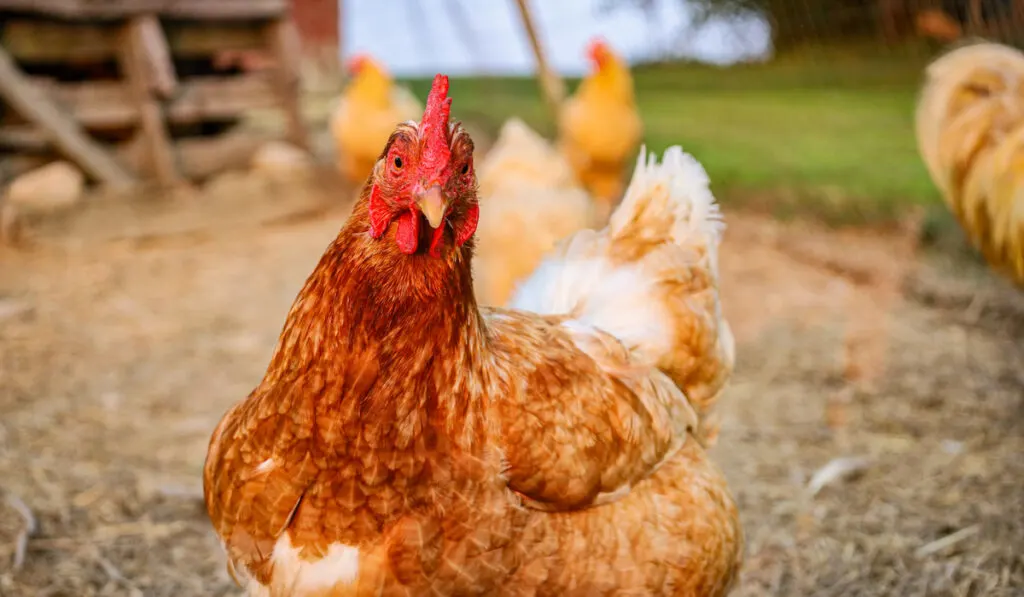
Appearance Characteristics
The Rhode Island Red chicken is a medium-sized bird with a deep, broad body and close-fitting feathers.
They have large, muscular chests and strong, powerful legs. The breed has a single, vivid red crest and wattle, as well as crimson ear lobes.
The Rhode Island Red chicken is a yellow-skinned bird with yellow feet and legs.
Their eyes are orange-red, and their feathers are glossy and well-defined with a metallic shine.
The Rhode Island Reds have powerful wings and can fly, although they usually remain on the ground.
Coloration
Over the years, the preferred color of ‘perfection’ for Rhode Island Red chickens has ranged from rich mahogany to dark rust.
The typical male has a red body and brown wings, while the average female has a red body and orange-brown wings with white or cream markings.
Feathers are supposed to be ‘hard,’ a trait inherited from their Malay and Java ancestors. But both sexes of Rhode Island Reds have delicate feathers covering the neck and abdomen.
Some black feathers on the tail and wings are entirely normal, although they are considered ‘smuttiness’ by APA judges.
Use
Rhode Island Reds are multipurpose birds that can be used for both meat and eggs.
Egg Production
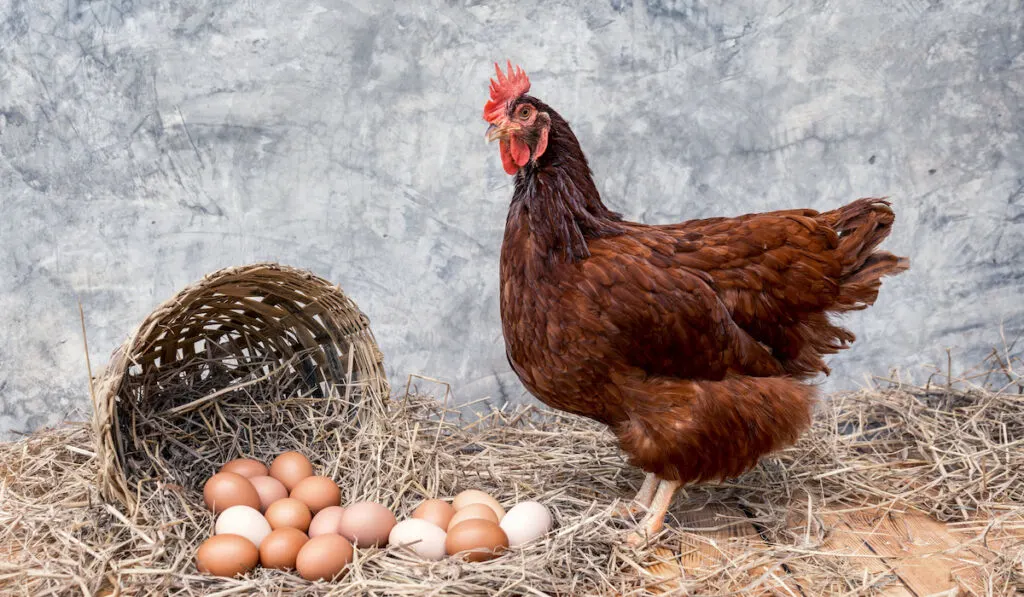
At about 21 weeks of age, Rhode Island Red hens begin laying eggs.
They can lay five to six big brown eggs a week. So, per bird, you may count on it laying between 200 and 300 eggs annually.
Rhode Island chickens produce eggs that weigh between 52 and 55 grams. Thus, eating one of these huge eggs can provide significant nutrients.
Additionally, Rhode Island Red hens continue to produce eggs regardless of the weather.
Meat Production
Rhode Island Reds mature quickly and are suitable for meat production. It takes roughly 4–5 months for a Rhode Island Red chicken to reach butcher weight.
When compared to other chicken breeds, Rhode Island chicken has leaner, juicier, and lower-fat flesh. This is why it is popular among those who follow a low-fat diet.
At around five to six months old, though, the bird begins to gain fat.
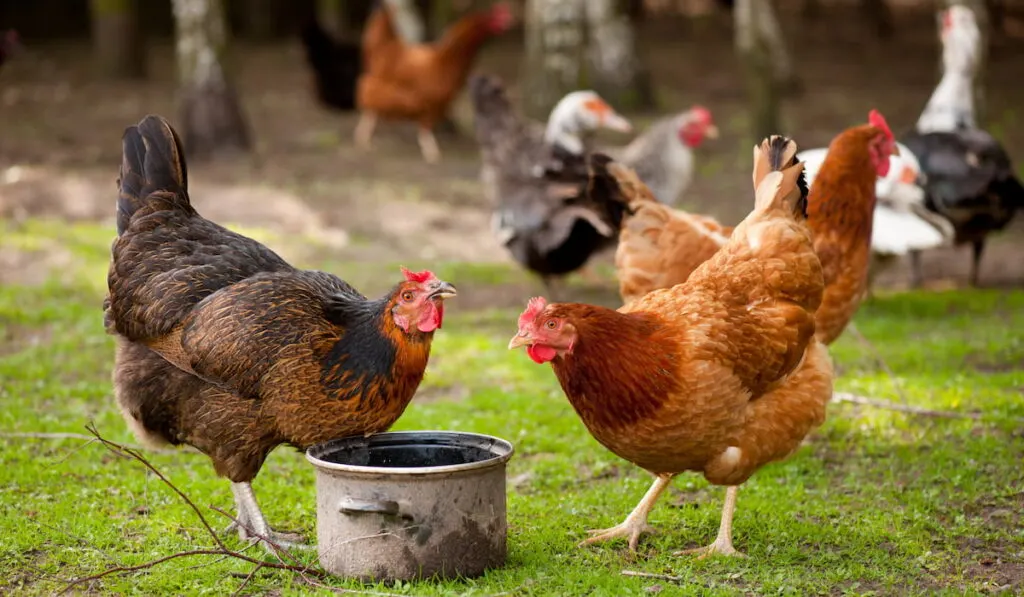
Lifespan
Like other chicken varieties, Rhode Island Red Chickens have a lifespan of about 5-10 years. However, they are more resilient and can endure harsher conditions than other types of chickens.
Temperament
Rhode Island Red hens are generally calm and gentle, and they like human company just as much as other chickens do.
Hens are also patient egg brooders and loving mothers.
However, Rhode Island Red roosters are reputed to be more aggressive than their female counterparts, at least when it comes to people.
It is important to note that each rooster has its own personality, which means that some Rhode Island Red roosters will be calm and kind while others will be more aggressive.
Health Problems
Numerous illnesses frequently jeopardize the Rhode Island Red chicken’s life expectancy. Farmers must take a variety of preventive steps to protect their hens against sickness and parasites.
Despite Rhode Island Red chickens being tough and resistant to numerous diseases, they are vulnerable to chicken mites, which are microscopic external parasites that bite and take blood from birds.
To prevent disease transmission, chickens need to be vaccinated.
Additionally, preventative measures such as dusting and worming should be done frequently.
The Rhode Island Reds benefit most from prompt attention, so do your best to address any health issues as soon as you notice them.
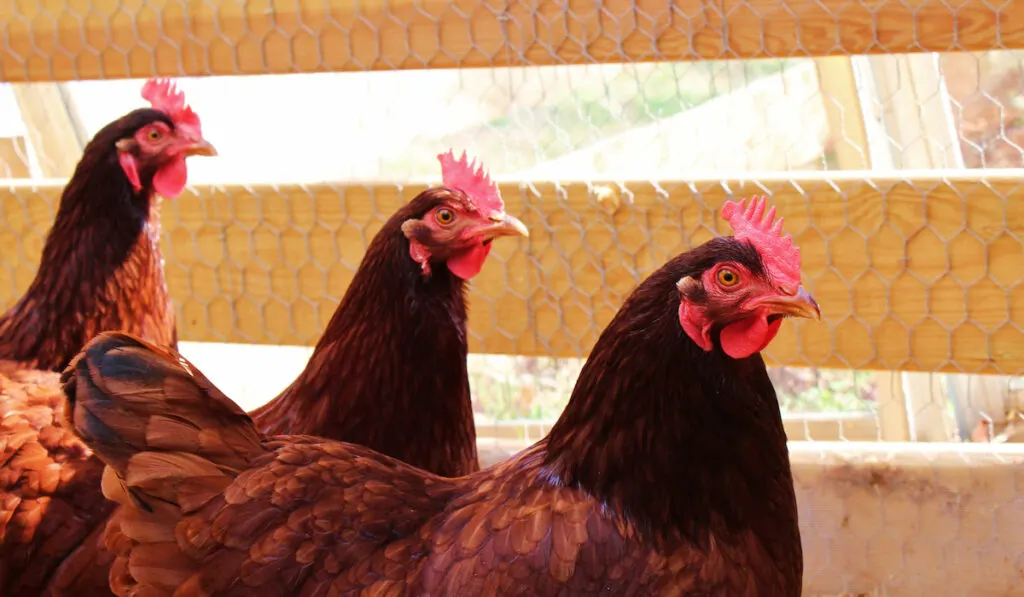
Nutrition
The best diet plans incorporate a wide range of nutrients, including vitamins, proteins, and carbohydrates.
In addition, you need to ensure they have access to essential minerals, including calcium, salt, zinc, copper, manganese, fluoride, and selenium.
Lack of key nutrients and minerals may impair their immune system, exposing Rhode Island Reds to too many diseases and parasites and reducing their lifespan.
But breeders also need to watch the hens’ diets to ensure they’re not getting too much or too little.
Chickens that are overweight are more likely to experience health concerns such as joint pain, heart troubles, and breathing difficulties.
Additionally, kidney issues brought on by a diet high in protein could shorten the lifespan of the Rhode Island Red.
Final Thoughts
Rhode Island Red chickens are a popular breed noted for their hardiness and outstanding egg-laying capacity.
Their rich red feathers and golden legs give them a striking appearance, and they are known for being friendly and easy to care for.
These birds can live up to ten years with adequate care and reliably deliver high-quality eggs.
Overall, Rhode Island Reds are a reasonable choice for both novice and experienced chicken keepers. They are adaptable birds that flourish in a variety of conditions, making them ideal for small-scale commercial operations or backyard flocks.
Resources
- https://cs-tf.com/rhode-island-red-rooster/
- https://www.chickensandmore.com/rhode-island-red/#Breed_History
- https://breeds.okstate.edu/poultry/chickens/rhode-island-red-chickens.htmlForwarded=afs.okstate.edu/breeds/poultry/chickens/rhodeislandred/
- https://learnpoultry.com/rhode-island-red-chicken/
- https://www.thespruce.com/chicken-breeds-rhode-island-red-3016554
- https://en.wikipedia.org/wiki/Rhode_Island_Red
- https://consort-design.com/rhode-island-red-lifespan
